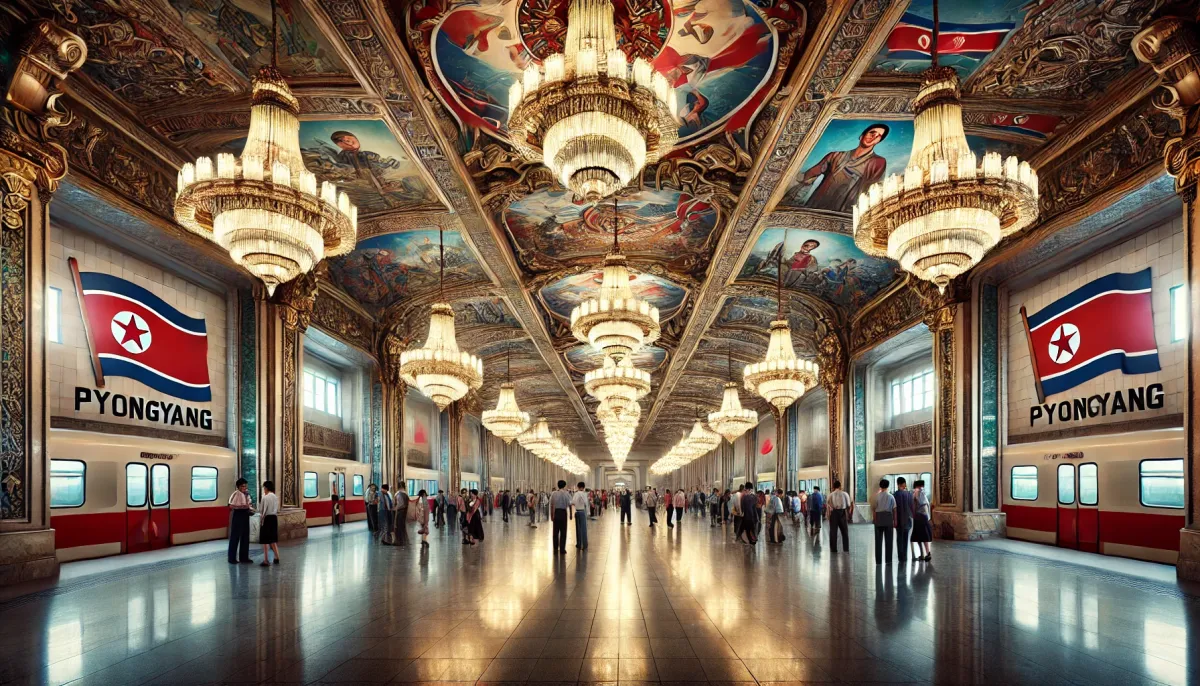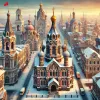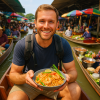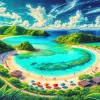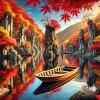Hi everyone, Mark here, your friendly neighborhood American backpacker, back with another tale from my Asian adventures! This time, I'm taking you on a whirlwind tour of North Korea, a country shrouded in mystery and often misunderstood. Forget the grim headlines – I experienced a North Korea far more complex than the media portrays, a land of stark contrasts and surprising hospitality.
A Culinary Journey Through the DPRK
Let's start with the food, something everyone's curious about when it comes to North Korea. Yes, there are persistent stories of food shortages, and the reality is that the food availability varies greatly depending on location and social standing. But what I encountered was surprisingly… plentiful. In Kaesong, I enjoyed a traditional Korean feast: Korean Copper Bowl Flavored Meal, featuring sweet dumplings, seaweed, spinach, mushrooms, braised eggs, and even a whole ginseng chicken! It was a far cry from the images of starvation often portrayed.
I also sampled inso, a type of "artificial meat" made from soybean oil residue. Initially, I was skeptical, but it had a surprisingly chewy texture and, honestly, wasn't bad at all! It's a testament to the resourcefulness of the North Korean people.
| Dish | Description | My Impression |
|---|---|---|
| Korean Copper Bowl Meal | A traditional feast with dumplings, seaweed, spinach, mushrooms, eggs, ginseng chicken | A surprisingly luxurious and delicious meal! |
| Inso | "Artificial meat" made from soybean oil residue | Chewy and surprisingly palatable – resourceful cuisine! |
The Pyongyang Metro: A Deeper Dive Than You Think
Next, I dove into Pyongyang's metro system, one of the deepest in the world, rumored to double as a bomb shelter! The stations are breathtaking – ornate chandeliers, stunning mosaics, and even statues of Kim Il-sung. It’s less about practical transportation and more like stepping into a museum showcasing North Korean ideology. Each station's name is imbued with socialist symbolism, further underscoring the political message. The sheer scale of the engineering, a testament to North Korea’s dedication to showcasing its power, was truly impressive. I was surprised by the cleanliness and the fact that it’s open to tourists.
The stations aren't just deep; some sections extend over 150 meters underground! The system, supported by China, the former Soviet Union, and Eastern European countries, is a blend of transportation and military defense, designed to withstand nuclear attacks. Tourists are currently only allowed access to two stations on the red line. The lack of advertising is also striking – no commercial endorsements, only national emblems and murals, reinforcing the controlled narrative.
The deep underground stations, reminiscent of Russia, were unexpectedly impressive. The scale and artistry were evident in every detail, from the ornate chandeliers to the intricate mosaics depicting scenes of national pride and historical events.
A Glimpse into Daily Life
My visit also included the People's Study Hall, North Korea's equivalent of the Library of Congress. It's a vast repository of knowledge, and the adjustable desks and computerized cataloging system were surprisingly modern. It was fascinating to see how this institution served as both a library and an educational center, actively engaging citizens in the promotion of national ideology.
I also witnessed a rehearsal for the Arirang Mass Games, a colossal spectacle involving hundreds of thousands of performers. It's an overwhelming display of coordinated movement, a testament to the rigorous training and discipline instilled in North Korean performers. The scale of it alone is enough to leave you speechless.
Beyond the Propaganda: Unconventional Observations
While the pervasive propaganda is undeniable, I found aspects of everyday life unexpectedly relatable. The strong emphasis on community and national pride, while channeled in a very particular way, resonated on a human level. The controlled environment doesn't necessarily equate to universal suffering, as many citizens know nothing beyond their reality, and thus don't experience a yearning for freedom.
Some things were simply bizarre – did you know that cannabis is legal in North Korea? Or that they use their own unique calendar system? The sheer strangeness, along with the controlled nature of the nation, is what makes North Korea such a unique travel destination.
Here are a few other quirky facts I discovered:
- Elections: North Korea holds elections every five years, but with only one candidate, resulting in a 100% approval rating.
- Traffic Control: Female traffic officers manage traffic, with no need for traffic lights due to the limited number of cars.
- Punishment: Crimes can affect up to three generations of a family.
- The May Day Stadium: This stadium is the largest in the world, with a capacity of 150,000 people.
The Mystery Remains
North Korea is a place of extreme contrasts. It’s a land where the grandiosity of architecture is juxtaposed with the simplicity of daily life, where meticulously crafted propaganda clashes with a resilient, adaptable spirit. While the experience is undoubtedly shaped by a tightly controlled narrative, the sheer uniqueness of the country and its people offers a travel experience unlike any other. For the adventurous backpacker, North Korea offers a chance to step into a different world, one that challenges preconceived notions and invites exploration. Would I recommend it? Absolutely. Just be prepared for an unforgettable, and somewhat bizarre, adventure!
